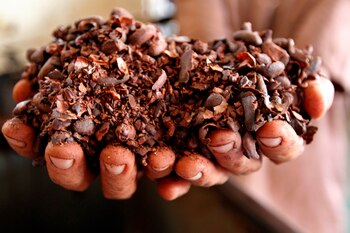

Before the arrival of the Spaniards in Tenochtitlan, there were very different things than we now know them. Some of these things were religion, clothing, language, and of course, how to market.
The inhabitants of Tenochtitlan, to market things, mainly attended the market of Tlatelolco, which was known as their twin city. There, people could find different products, such as food, seeds, animals, and even prisoners.
However, the form of payment was different, and even, barter was practiced, which was the exchange of objects. However, other things were also paid for, for example, cocoa.
And it is that the Mesoamerican peoples used the cocoa seed as a method of change before the European conquest. The transition to this type of exchange was forced and complicated, not at all amicable, as were all the conquests that accompanied it.

Prior to the minting of the first coins in the territory, as already mentioned, bartering was practiced, and the use of various objects (not exclusively the cocoa seed), as a means of commercial exchange.
The use of these goods as commercial means, they can be called primitive currency, transition currency or object currency and if they were socially accepted, it was because they had an agreed intrinsic value.
Something similar happens with the banknotes that are currently used, since they are literally pieces of paper with characteristic elements, but we have accepted their commercial values, although they cost much less when translated into literality.
In pre-Hispanic times, cocoa was considered a strange and precious object, and although there is not much talk about it, while it was used, other objects were also used for commercialization, such as obsidian, and some pieces of copper that had the shape of sharps, among others.
With the arrival of the Spaniards in America at the beginning of the 16th century, two contrasting methods of exchange were confronted: the economy of Spain, with the imposed monetary system, and various objects of exchange, a system that Europeans did not get used to until the first pieces of metal were minted.
Behind the cocoa seed, there are reasons that made it especially valuable at the time. In mythology, his arrival in Quetzalcoatl is attributed. The story goes that he brought him to earth to show men a food that was not disdained by the gods.
In terms of cultivation, cocoa is a fruit, whose planting conditions are specific and complicated. It requires particular conditions for trees to be productive, and their harvest is preceded by great effort.
In addition, in terms of products, cocoa had multiple uses, which is why its great significance for peoples could be attributed. There is even a record of the use of fake coins in Mesoamerican markets, seeds similar to those of cocoa that sought to deceive traders. Fraud was not exempt from this type of exchange.
Although there is not much talk about it, cocoa had certain prices with which its value can be more or less identified. In New Spain, when the conquerors realized its use as a method of exchange, they decided to use cocoa beans as a method of payment to indigenous people for their work. In Acatlán, for example, 25 cacaos were paid for a day's work, and in Cuauhtinchan they charged 40 cocoa to get out of prison.
In fact, cocoa as a currency for the Spaniards was productive, because they literally had a method of exchange with the indigenous people that grew on trees. It was used and used together with pieces of cloth-clothing, as a method of payment on the farms.
It is estimated that it ceased to be used in the 19th century, when the last commercial uses were recorded in the area.
KEEP READING: